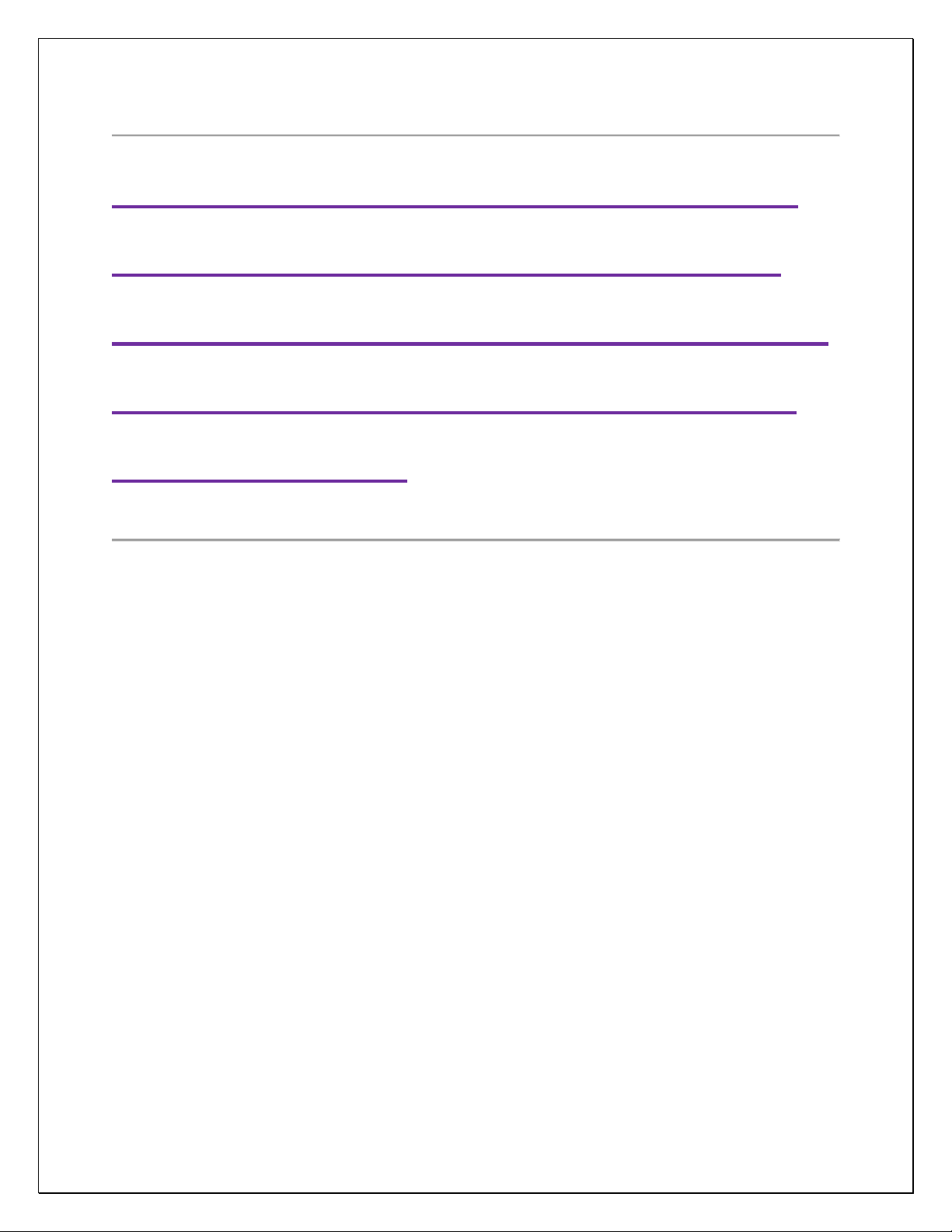
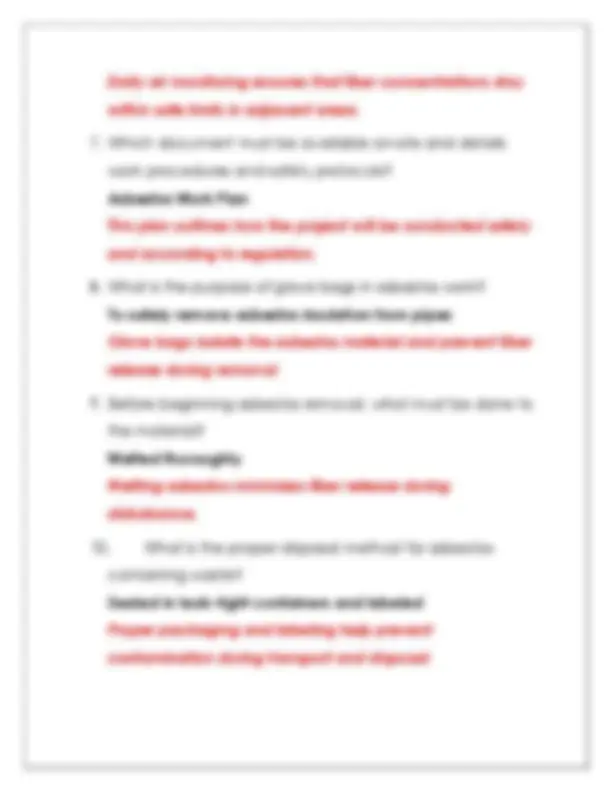
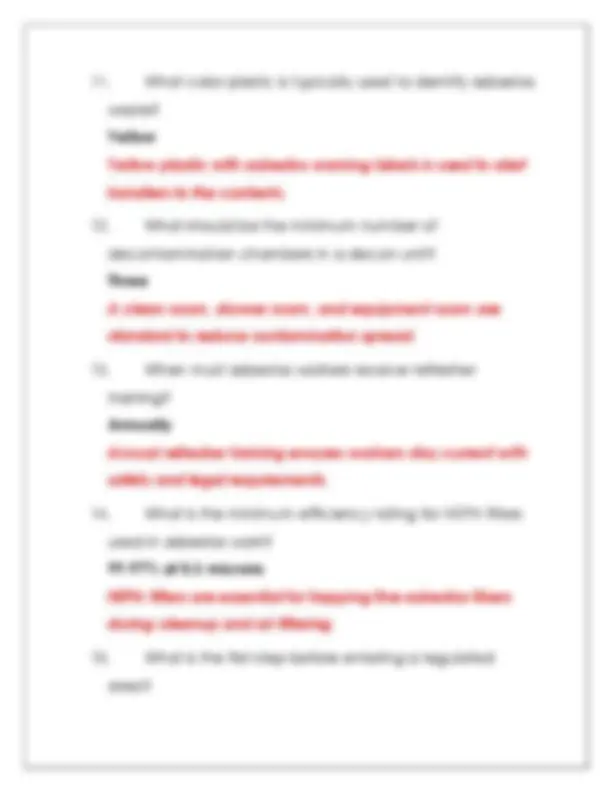

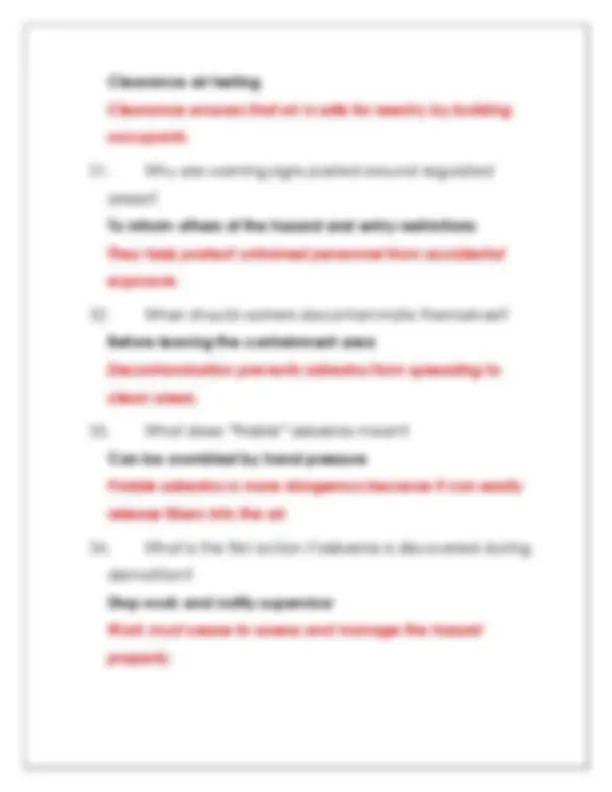
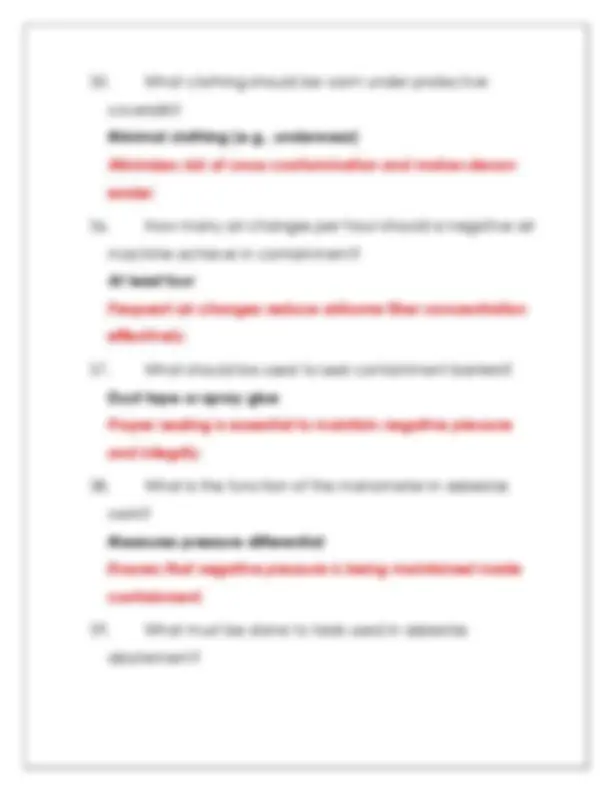
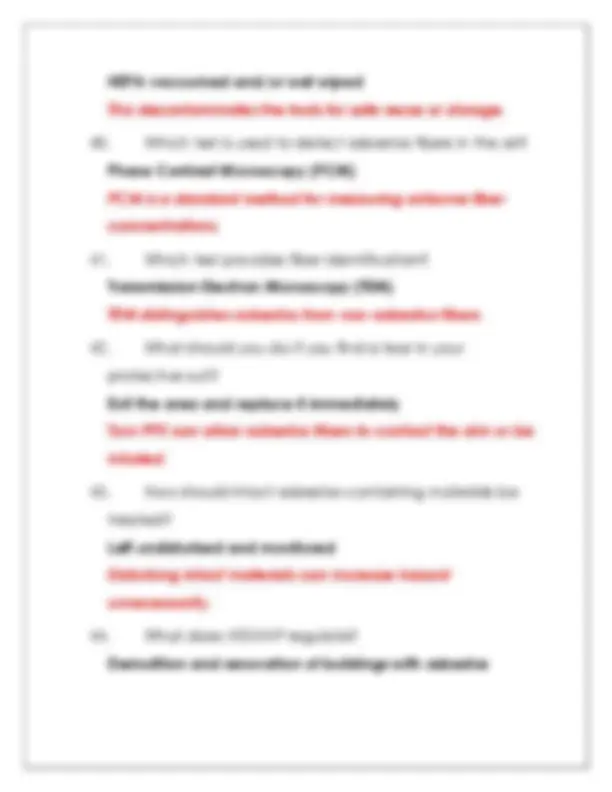
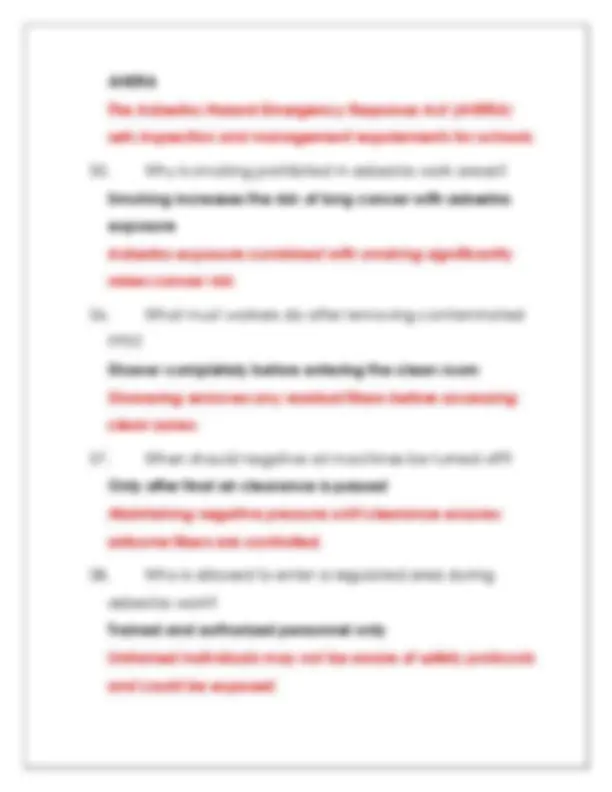
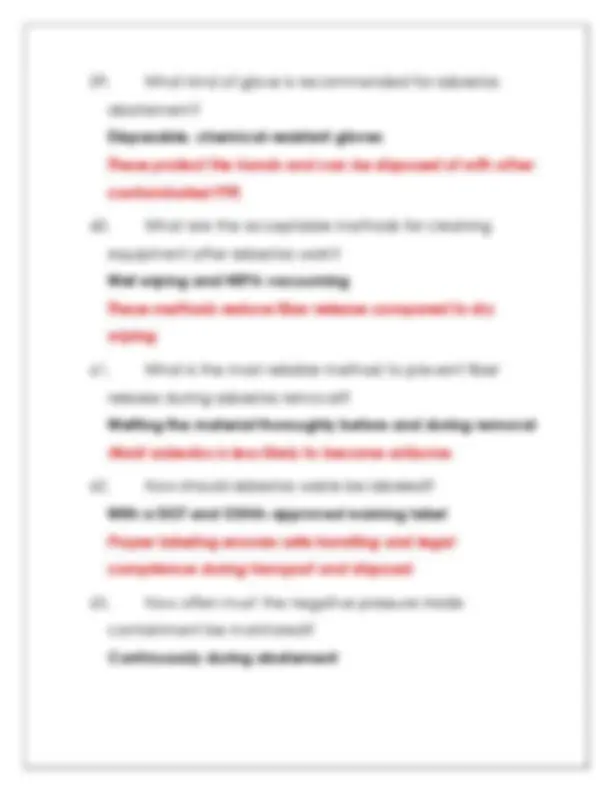
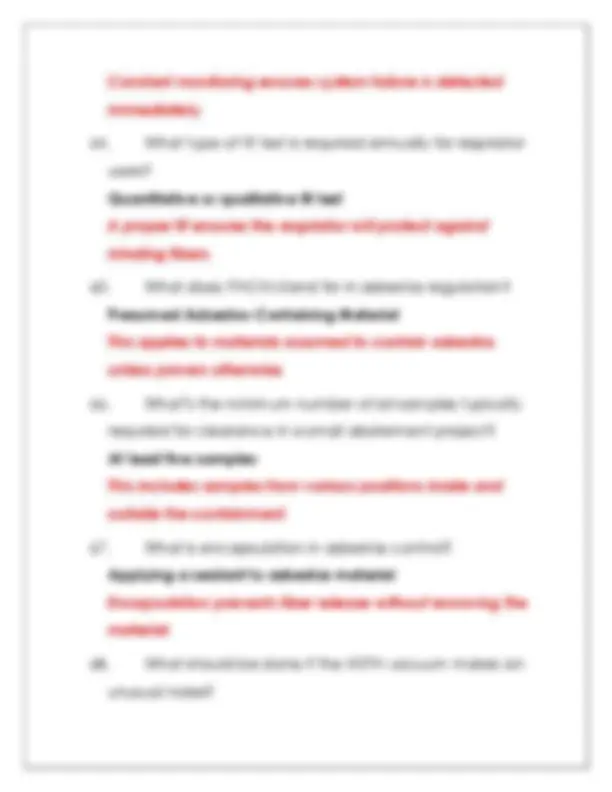
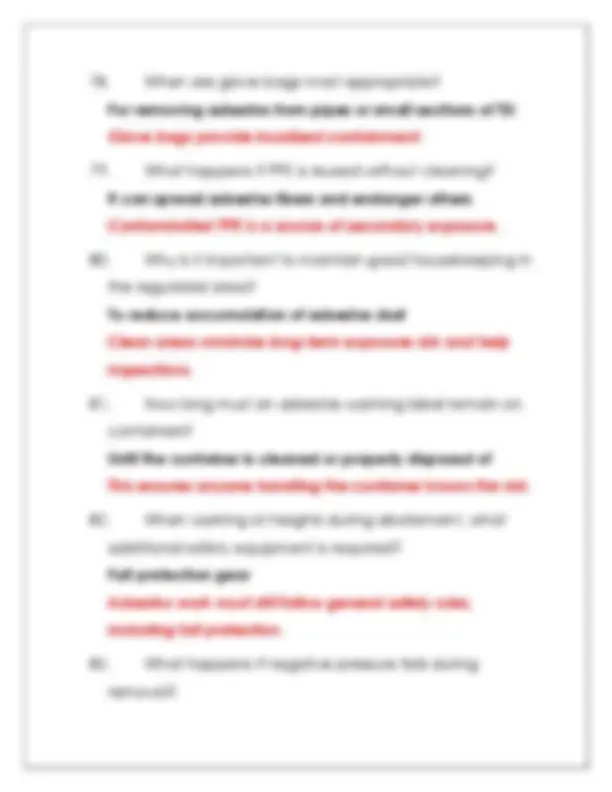
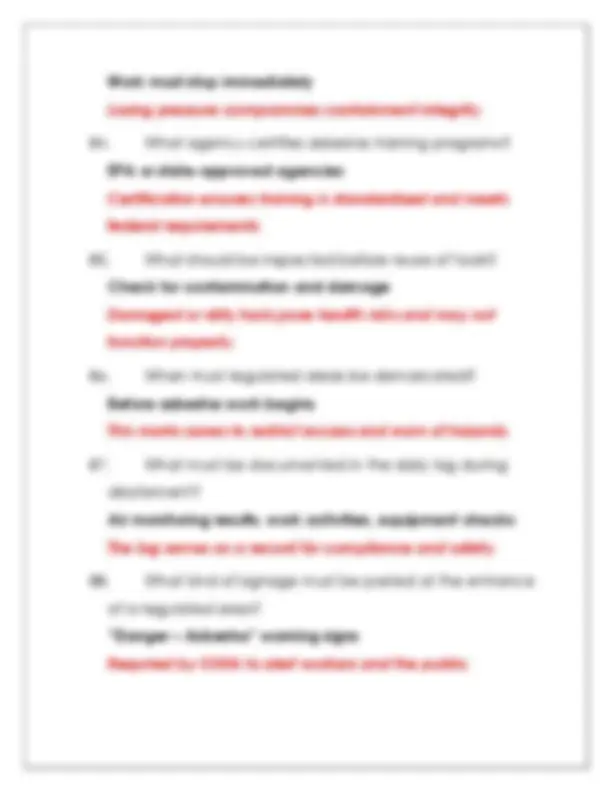
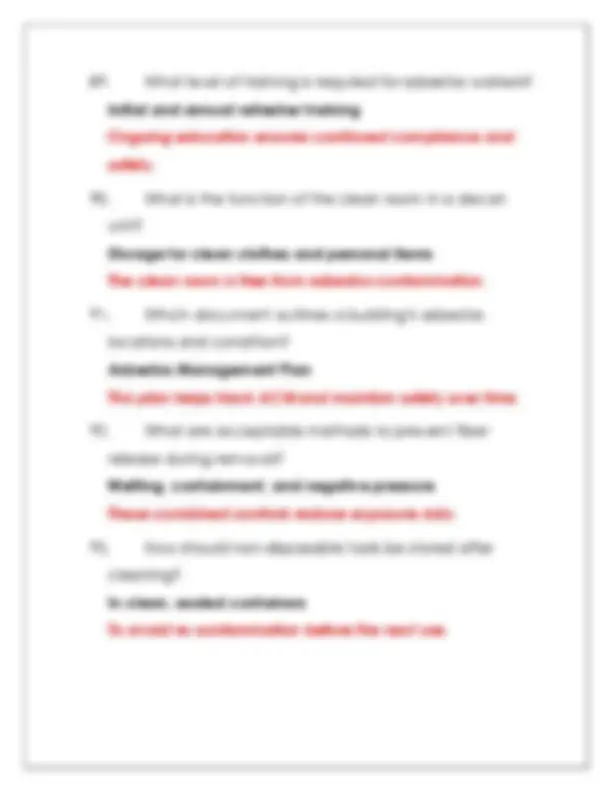
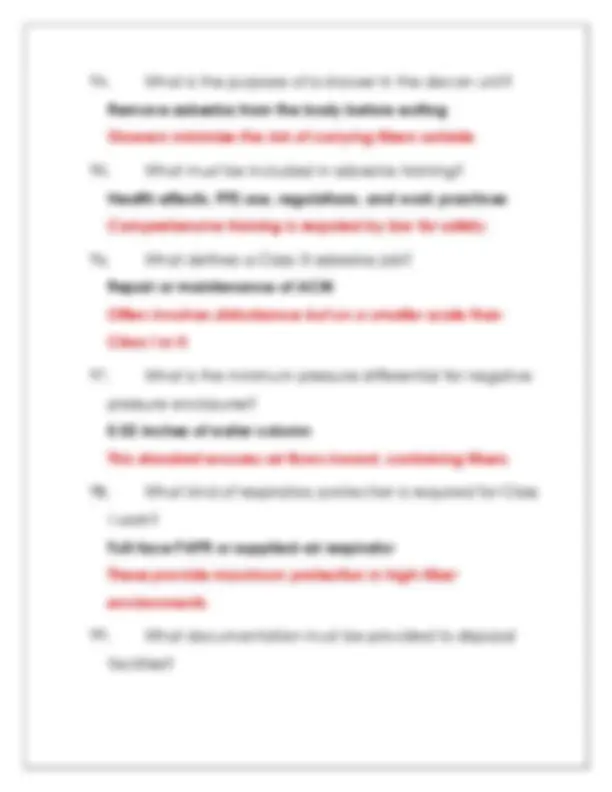
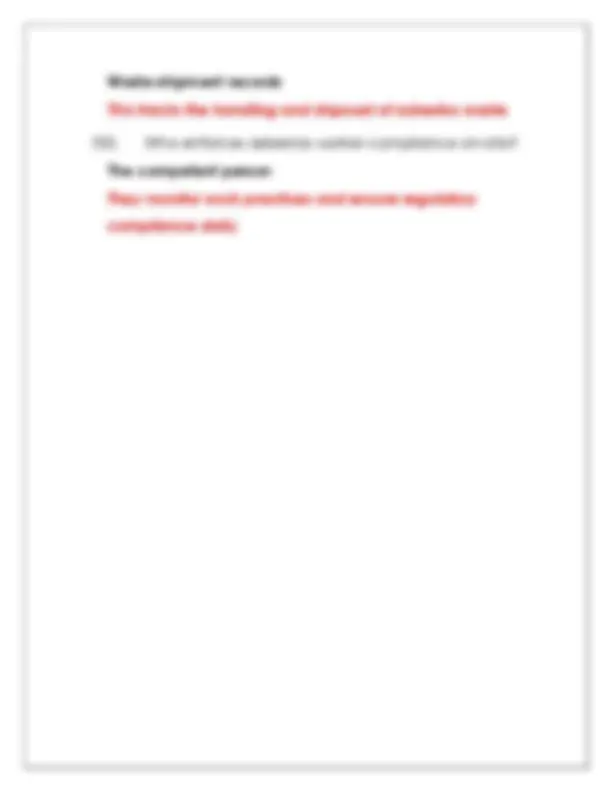


Study with the several resources on Docsity

Earn points by helping other students or get them with a premium plan


Prepare for your exams
Study with the several resources on Docsity

Earn points to download
Earn points by helping other students or get them with a premium plan
Community
Ask the community for help and clear up your study doubts
Discover the best universities in your country according to Docsity users
Free resources
Download our free guides on studying techniques, anxiety management strategies, and thesis advice from Docsity tutors
Asbestos Worker/Handler Certification Exam Practice Test 1 QUESTIONS AND CORRECT ANSWERS (VERIFIED ANSWERS) PLUS RATIONALES 2025 Q&A | INSTANT DOWNLOAD PDF
Typology: Exams
1 / 22

This page cannot be seen from the preview
Don't miss anything!















regulates workplace exposure limits to protect worker health.
Put on required PPE Entering without proper PPE poses a direct health risk from airborne fibers.
Clearance air testing Clearance ensures that air is safe for reentry by building occupants.
HEPA vacuumed and/or wet wiped This decontaminates the tools for safe reuse or storage.
EPA’s NESHAP rule manages air pollutants from these activities.
The Asbestos Hazard Emergency Response Act (AHERA) sets inspection and management requirements for schools.
Stop using it and inspect or replace it An unusual noise may indicate filter failure or motor issues, risking fiber release.
Using fans and leaf blowers to stir up particles Aggressive sampling ensures suspended fibers are detected.
Work must stop immediately Losing pressure compromises containment integrity.